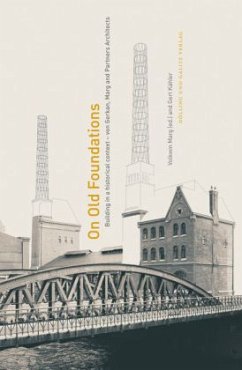'Architect, what will you do with what's already there?' Only modernity has engaged this question deliberately and recognized it as a necessary part of responsible building development. Architecture is not the creation of something new without a past; instead it builds on the foundations of the old, using it to define the space of the new. Designing architecture that cooperates with this space means embracing the space by accepting it. Cooperation means coexistence; it means becoming a part of the space, being accepted and embraced by it, both absorbing it and being absorbed by it. An ideal building has regard for the past. It takes its cues from that which already exists and asks what has happened here so far, in both space and time. It has regard the future in that its design not only does not inhibit the future transformation of space in time (and time in space), but can also become an active participant.
With about 30 examples from Hamburg (HafenCity, Kehrwiederspitze, Hamburg Museum a.o.) and the world (Berlin State Opera, Stuttgart Central Station, Olympic Stadium of Berlin, National Museum of China, Kirov Stadium St.Petersburg, Stadium of Warsaw a.o.)
With about 30 examples from Hamburg (HafenCity, Kehrwiederspitze, Hamburg Museum a.o.) and the world (Berlin State Opera, Stuttgart Central Station, Olympic Stadium of Berlin, National Museum of China, Kirov Stadium St.Petersburg, Stadium of Warsaw a.o.)





